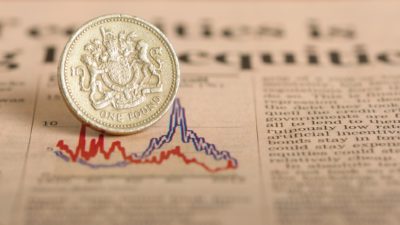You’ve probably read the phrase “buy when there’s blood in the streets” hundreds of times. That’s because it’s a strategy that works.
Over the years, there have been thousands of pages of research published on the subject, and all these studies reach the same conclusion — the best time to buy is when others are selling.
Unfortunately, all these studies also show that in the short-term, underperformance is inevitable. Moreover, any seasoned investor will tell you that’s it’s almost impossible to time the market.
Should you invest £1,000 in Sainsbury's right now?
When investing expert Mark Rogers has a stock tip, it can pay to listen. After all, the flagship Motley Fool Share Advisor newsletter he has run for nearly a decade has provided thousands of paying members with top stock recommendations from the UK and US markets. And right now, Mark thinks there are 6 standout stocks that investors should consider buying. Want to see if Sainsbury's made the list?
Market timing mistakes
Trying to time the market by moving out of stocks when the outlook appears bleak, with the plan to buy back in when things improve, often ends in failure and can cost investors dearly.
You see, most of the market’s gains are usually made in a very small period. Missing just one or two days of trading can wreck years of performance figures.
For example, between 1994 and 2013 the S&P 500 returned 9.2% per annum. However, if investors’ had missed the index’s best ten days of trading over this two-decade sample period, annual returns would have slipped to just 5.5%.
By missing the best 30 days of trading, returns would have collapsed to a mere 0.9% per annum. Miss the best 90 days of trading, and investors would have lost 8.6% per annum between 1994 and 2013.
Over the above sample period, the market experienced two major setbacks: the dot-com boom and the financial crisis. The figures suggest that investors who did nothing throughout both of these crises came out better than those who attempted to avoid them.
Even though the figures above are based on the performance of the S&P 500 — an American index — they’re still relevant. The S&P 500 is considered to be the world’s leading stock index, accounting for around 12% of the global equity market capitalization.
Buy when others are fearful
Another study, this time looking at investors’ performance over four decades showed similar results to the study above.
In this study, four hypothetical investors each invested $10,000 in S&P 500 from January 1, 1972, to December 31, 2013, but all four investors acted differently during the 1973 to 1974 bear market. Between 1973 and 1974 the S&P 500 lost 50% of its value.
The “Nervous Investor” sold out and went to cash. The “Market Timer” sold out but moved back into stocks on January 1, 1983, at the beginning of a historic bull market. The “Buy and Hold Investor” held steady throughout the period.
And lastly, the “Opportunistic Investor” realised that the bear market had created opportunities and contributed an additional $10,000 to his original investment on January 1, 1975.
How did these four very different investment styles work out?
Well, by 2013, the Nervous Investor’s $10,000 investment had returned a compound gain of 9.6% in total over four decades! The Market Timer did slightly better, with a total return of 2,500% over the period. The Buy and Hold Investor did even better, with a total return of 6,440%.
However, the Opportunistic Investor saw their capital increase in value by a total of 15,210% over the period, turning $10,000 into $1.5m. If that’s not an incentive to buy when there’s blood in the streets, I don’t know what is.







